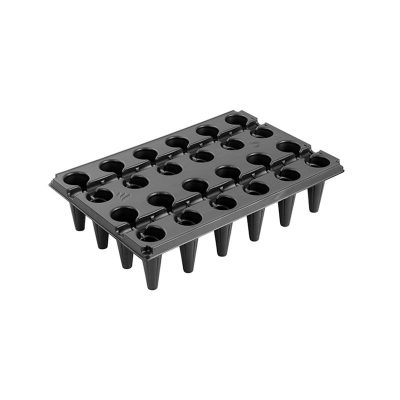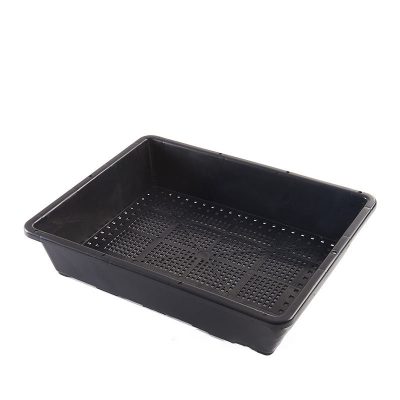Plant trays are versatile gardening tools that can be used for more than just seed starting. Here are some creative uses for plant trays in your gardening endeavors:
- Microgreens Tray: Plant trays with shallow compartments are ideal for growing microgreens. Fill each compartment with a thin layer of potting mix, sow the microgreen seeds, and keep the soil consistently moist. The trays’ shallow design allows for easy harvesting of the tender microgreen shoots.
- Propagation Tray: Use plant trays for plant propagation by taking stem or leaf cuttings. Fill the compartments with a well-draining rooting medium, insert the cuttings, and provide appropriate moisture and light conditions for rooting. The trays’ compartments help keep the cuttings organized and make it easier to monitor their progress.
- Succulent or Cactus Tray: Plant trays with good drainage can be used to grow a collection of succulents or cacti. Use a well-draining soil mix formulated for succulents and cacti and plant them in the compartments. The trays can be placed indoors or outdoors, and they provide a neat and organized way to display and care for your plants.
- Herb Garden Tray: Create a small herb garden in a plant tray by planting different herbs in separate compartments. This allows you to have a variety of herbs in a compact space, and the tray can be placed conveniently near the kitchen for easy access to fresh herbs while cooking.
- Salad Greens Tray: Plant trays with larger compartments can be used to grow salad greens like lettuce, spinach, or arugula. Sow the seeds in the compartments, and as the greens grow, harvest the outer leaves while allowing the inner ones to continue growing. This provides a continuous supply of fresh salad greens.
- Vertical Garden Tray: Attach plant trays to a wall or fence to create a vertical garden. Fill the compartments with plants that have trailing or cascading growth habits, such as trailing vines or colorful flowering plants. This adds a unique and eye-catching display to your garden while maximizing vertical space.
- Herb Drying Tray: Use a plant tray with good airflow to dry herbs. Harvest your herbs, rinse them if necessary, and spread them out in a single layer on the tray. Place the tray in a well-ventilated area, away from direct sunlight. The tray allows air circulation around the herbs, promoting drying while keeping them organized.
- Seedling Hardening Tray: Before transplanting seedlings to the garden, gradually expose them to outdoor conditions to acclimate. Use a plant tray to move the seedlings outdoors for a few hours each day, gradually increasing the duration over a week or two. This helps the seedlings adjust to the outdoor environment before planting.
These are just a few creative uses for plant trays beyond seed starting. Experiment and adapt the trays to suit your gardening needs and explore other possibilities based on your plants and available space. Plant trays are versatile tools that can help you maximize your gardening potential.








